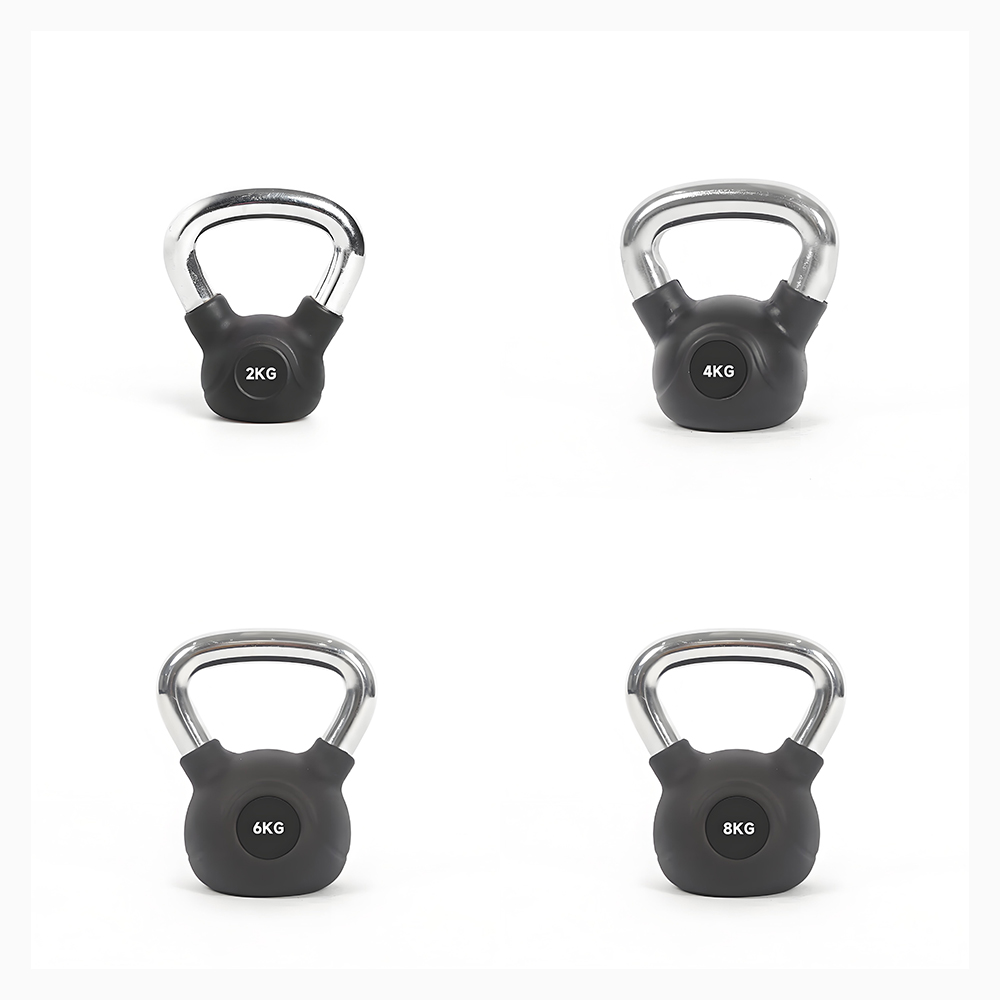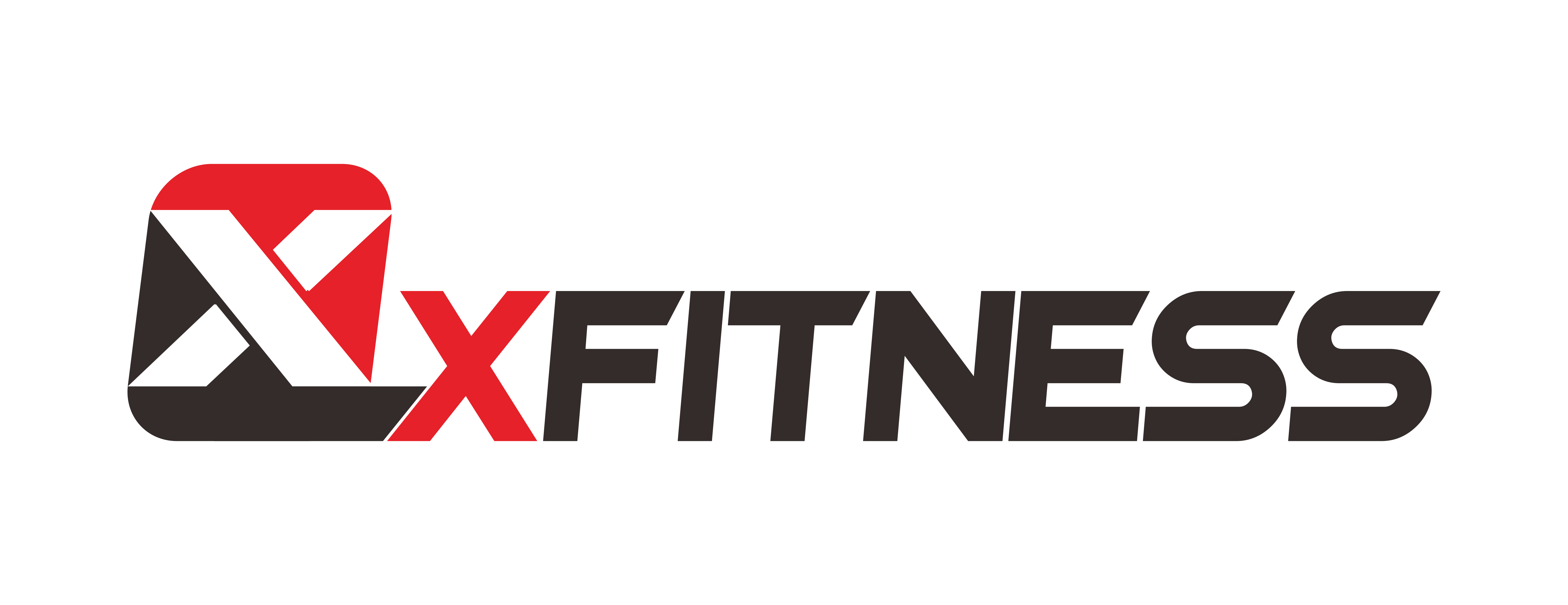RUBBER COATED DUMBBELL XDB401

Item code: XKB401
Materials: Rubber+ IRON
Weight Ranges: 2/4/6/8/10/12/14/16/18/20/24 KGS
| 2 KGS | Rehabilitation |
| 4 KGS | Novice female trainees with limited strength |
| 6 KGS | Novice female trainees with good strength |
| 8 KGS | Female trainees who work out regularly |
| 10 KGS |
Female trainees who want more strength |
| 12 KGS | Professional female trainees |
Advantages of vinyl caoted Kettlebells
A rubber-coated kettlebell is a versatile fitness tool designed for strength training, functional workouts, and conditioning. Unlike traditional cast-iron kettlebells, it features a durable rubber that encases the weight, combining the benefits of classic kettlebell training with added practicality and safety.
Core Material: The inner weight is typically made of cast iron or steel, providing a solid, balanced feel.
Rubber Shell: The exterior is coated with a thick layer of high-density rubber or vinyl, offering protection against rust, scratches, and floor damage.
Ergonomic Handle: The handle remains uncoated for a secure grip, ensuring proper form during swings, cleans, snatches, and other dynamic movements.
Adjustable Weight Options: Available in various weights (e.g., 4kg–30kg), catering to beginners and advanced users.
Durability: The rubber coating extends the kettlebell’s lifespan by resisting corrosion and minimizing wear from drops or collisions.
Floor-Friendly: Ideal for indoor or gym use, the rubber shell absorbs impact, reducing noise and preventing damage to hard floors or equipment..
Enhanced Grip: The textured coating provides extra friction for exercises like goblet squats or carries, even with sweaty hands.
Versatility: Suitable for high-intensity interval training (HIIT), CrossFit, rehabilitation, or home workouts.
Maintenance Tip: Wipe the rubber surface regularly with a damp cloth to remove dirt and sweat. Avoid prolonged exposure to direct sunlight to prevent the coating from cracking.
Beginner-Friendly Kettlebell Exercises
Kettlebell Deadlift
- How to: Stand with feet hip-width apart, grip the kettlebell handle with both hands. Hinge at the hips, lower torso while keeping back flat, then drive through heels to stand.
- Muscles: Hamstrings, glutes, core.
- Tip: Avoid rounding your back.
Kettlebell Goblet Squat
- How to: Hold the kettlebell close to your chest (handle up). Squat low, keeping elbows inside knees. Push through heels to stand.
- Muscles: Quads, glutes, core.
- Tip: Engage core to maintain upright posture.
Russian Kettlebell Swing
- How to: Hinge hips back, swing the kettlebell between legs, then explosively thrust hips forward to swing it to chest height. Control the descent.
- Muscles: Posterior chain (glutes, hamstrings), shoulders, core.
- Tip: Power comes from hips, not arms.
Intermediate Moves
Kettlebell Clean
- How to: Swing the kettlebell upward, then "catch" it smoothly in a rack position (elbow tucked, weight resting on forearm).
- Muscles: Shoulders, traps, grip strength.
- Tip: Use your legs to generate momentum.
Turkish Get-Up
- How to: Lie on your back, press the kettlebell overhead with one arm. Roll to the opposite elbow, then stand up step-by-step while keeping the kettlebell stable. Reverse the motion.
- Muscles: Full-body (core, shoulders, legs).
- Tip: Move slowly and maintain eye contact with the kettlebell.
Single-Arm Kettlebell Press
- How to: Hold the kettlebell in a rack position (shoulder height). Press it overhead while bracing your core. Lower with control.
- Muscles: Shoulders, triceps, core stabilization.
- Tip: Keep ribs down to avoid arching your back.
Advanced Techniques
Kettlebell Snatch
- How to: Swing the kettlebell between your legs, then explosively pull it overhead in one fluid motion, locking out your arm.
- Muscles: Full-body power, grip, shoulders.
- Tip: Practice with lighter weights first to master timing.
Double Kettlebell Front Squat
- How to: Hold two kettlebells in the rack position (shoulders). Squat deep while keeping elbows high and chest up.
- Muscles: Quads, glutes, upper back.
- Tip: Breathe deeply to stabilize your core.
Renegade Row
- How to: Assume a plank position with hands on kettlebells. Row one kettlebell to your ribcage while balancing on the other arm. Alternate sides.
- Muscles: Back, core, shoulders.
- Tip: Avoid rotating your hips.
Bottoms-Up Press
- How to: Hold the kettlebell upside-down (handle down, bell up). Press it overhead while maintaining balance.
- Muscles: Grip strength, shoulder stability, core.
- Tip: Start with light weights to build control.
Evolution of Kettlebells:
Ancient Origins (Pre-18th Century)
The earliest traces of kettlebell-like tools date back to ancient civilizations. In ancient Greece, athletes used handled weights resembling modern kettlebells for strength training, while similar devices appeared in Chinese martial arts practices and
Scottish Highland Games. These primitive forms laid the groundwork for functional weight training.
Emergence in Russia (18th–19th Century)
Kettlebells evolved into standardized tools in 18th-century Russia, where they were originally cast-iron "girya" (Russian: гиря) used as market (counterweights) for measuring goods. By the late 1700s, Russian laborers and strongmen began repurposing them for feats of strength, sparking informal competitions in rural villages.
Formalization and Popularization (20th Century)
Early 1900s: Kettlebells gained recognition as fitness tools. The 1904 St. Louis Olympics featured a kettlebell throwing event, highlighting their athletic potential.
Soviet Era: The USSR systematically integrated kettlebells into military and athletic training in the 1940s. Two distinct styles emerged:
- Competitive Sport (Girevoy Sport): Focused on endurance-based lifts (e.g., snatches, cleans) within timed sets.
- Hardstyle Training: Emphasized explosive power for combat readiness.
- 1985: The Soviet Union established formal kettlebell sport regulations, hosting its first national championship and cementing kettlebells as a legitimate discipline.
Global Expansion (21st Century)
Post-USSR, Russian immigrants introduced kettlebells to Western fitness culture. Their versatility for strength, cardio, and functional training fueled worldwide adoption. Innovations like adjustable and soft-shell sand-filled kettlebells further diversified their use in home and commercial gyms.
Modern Competitive Landscape
Today, organizations like the International Kettlebell Sport Federation govern standardized events, such as 10-minute endurance challenges, while hybrid programs (e.g., CrossFit) integrate kettlebells for full-body conditioning.

